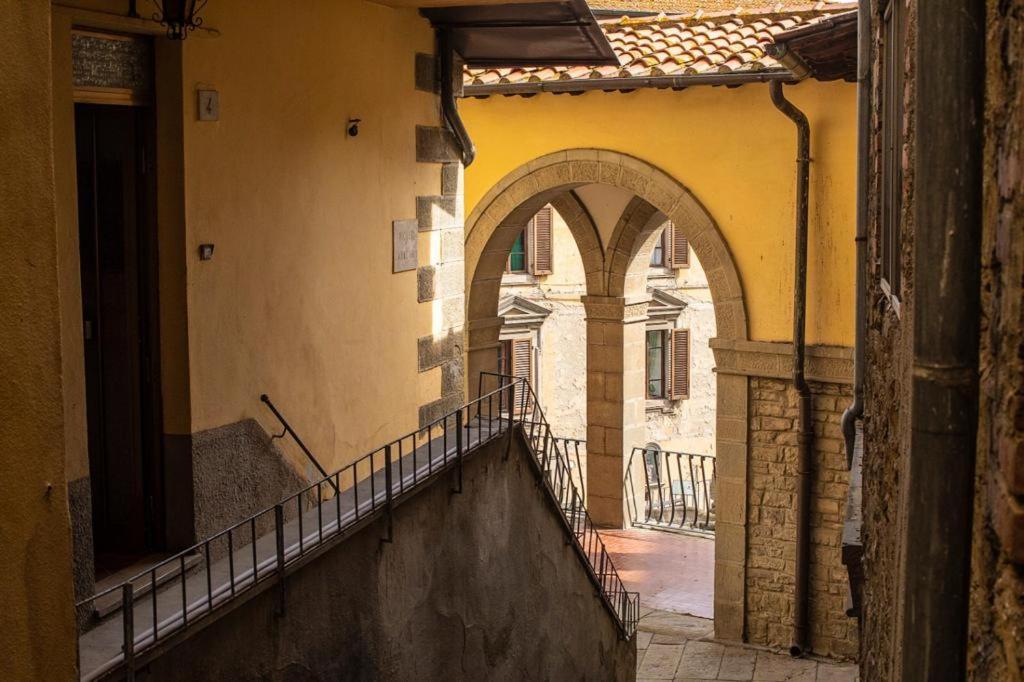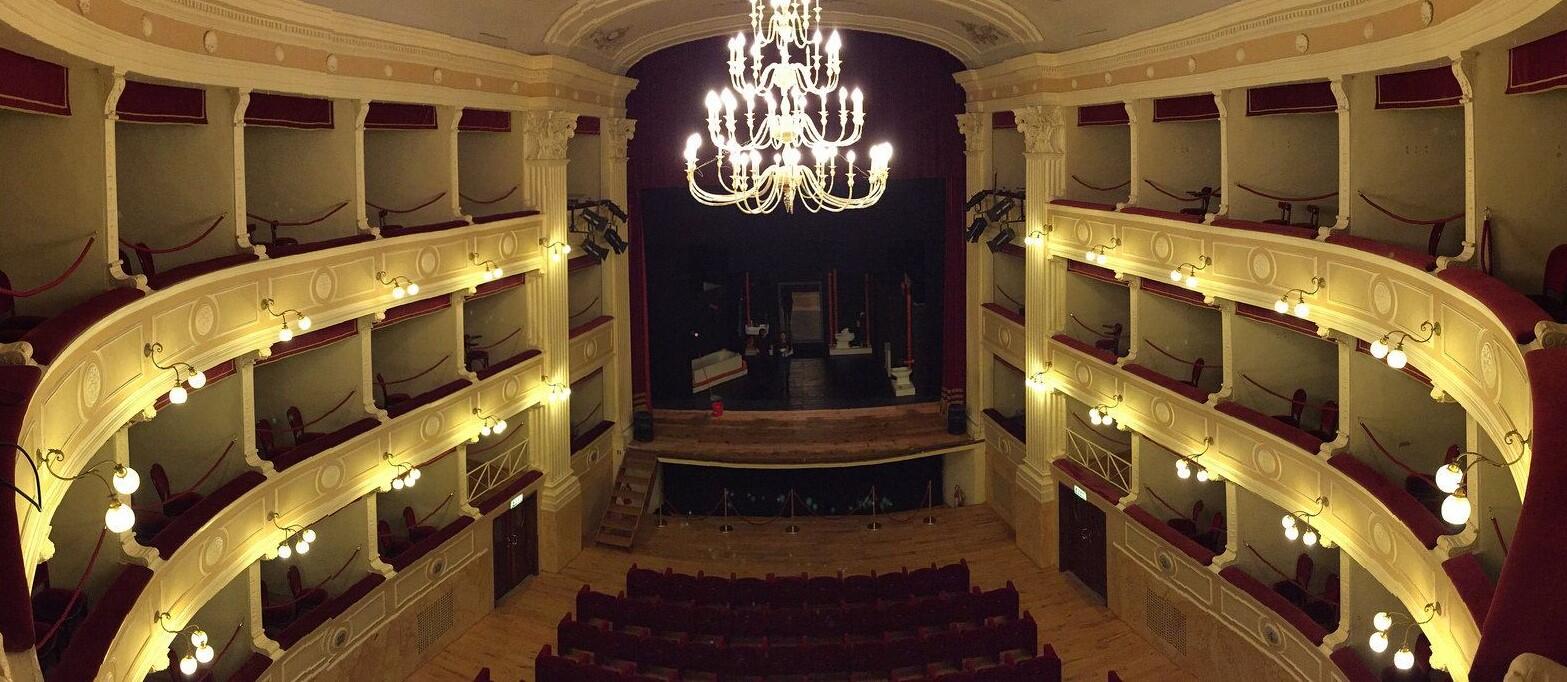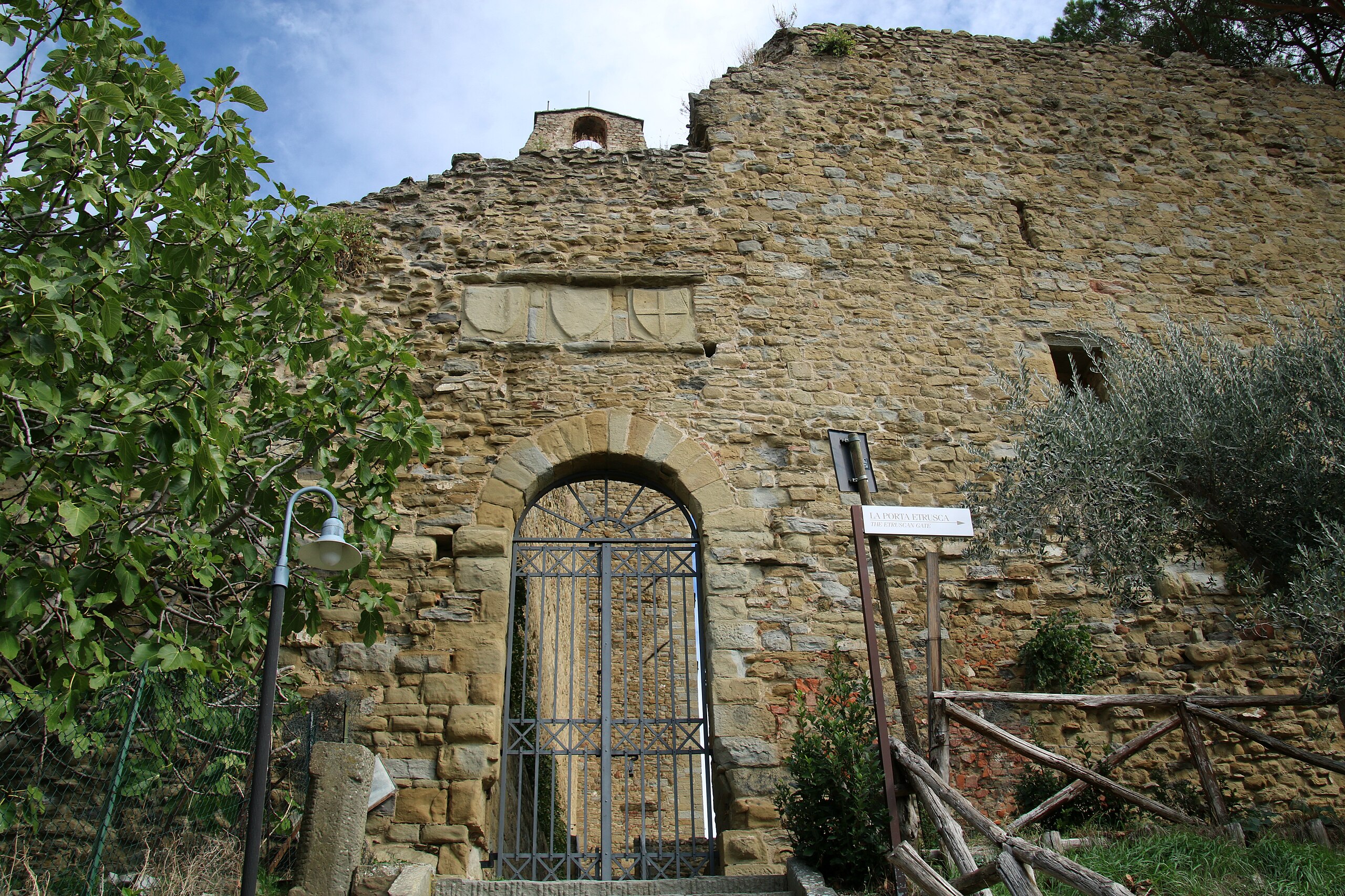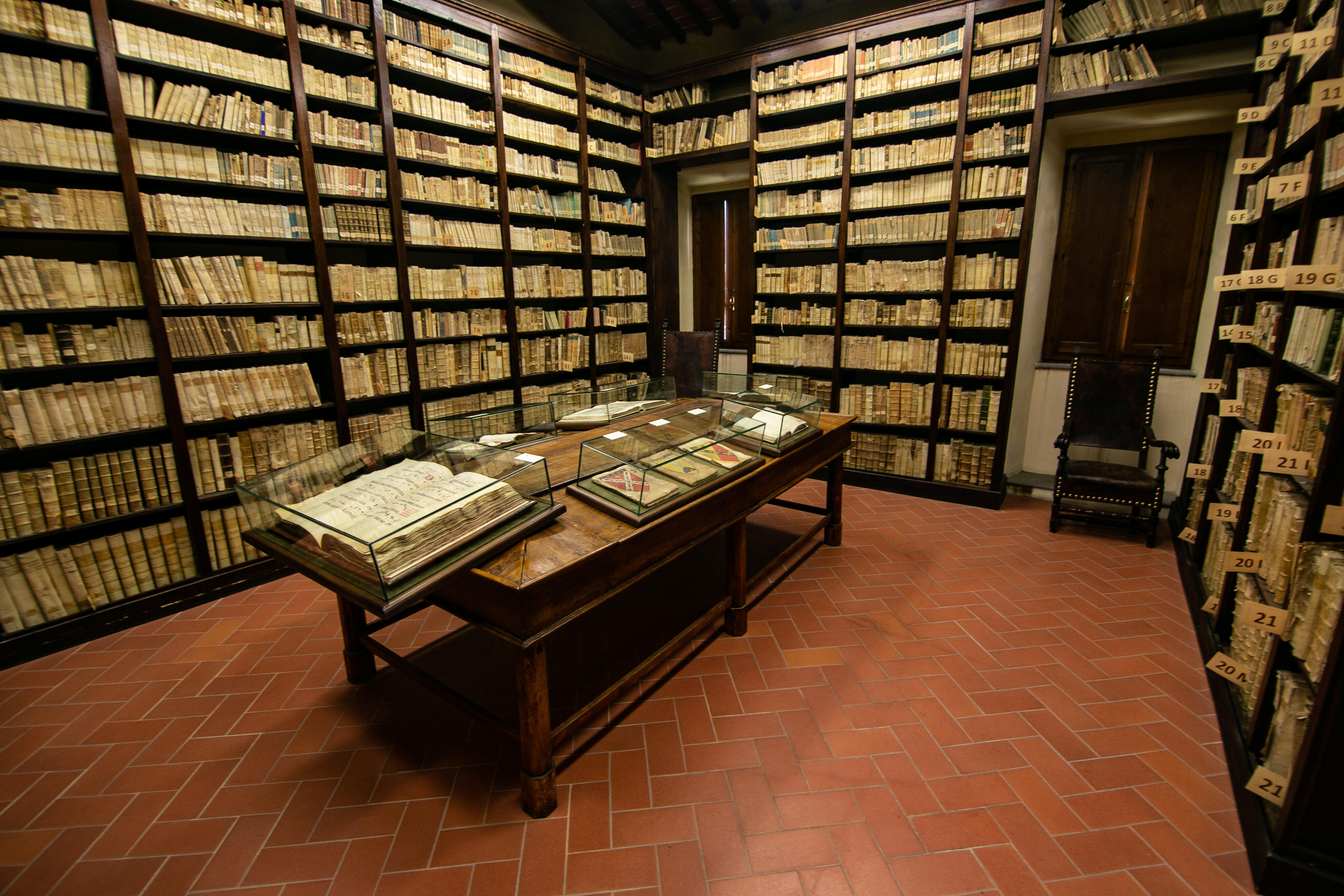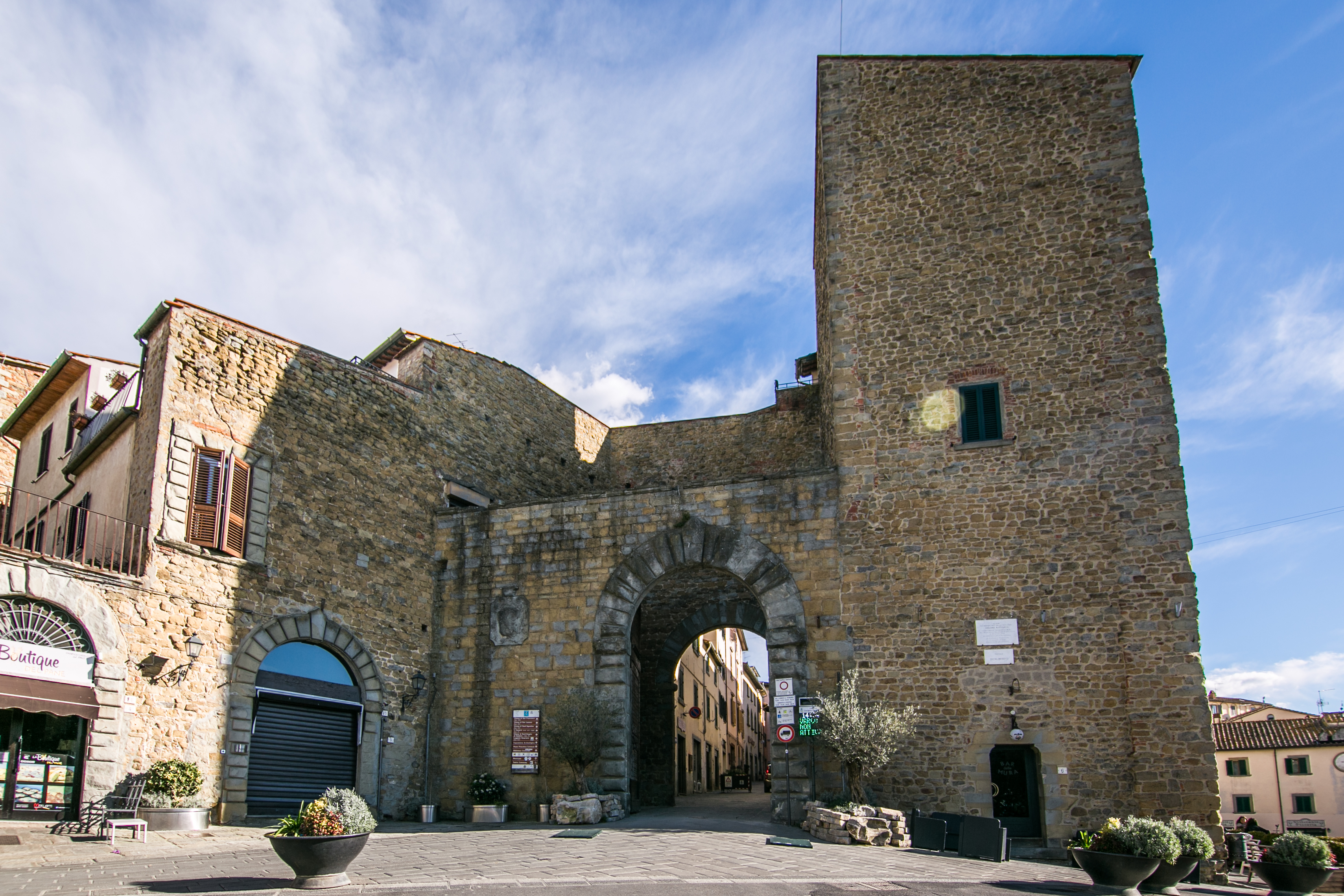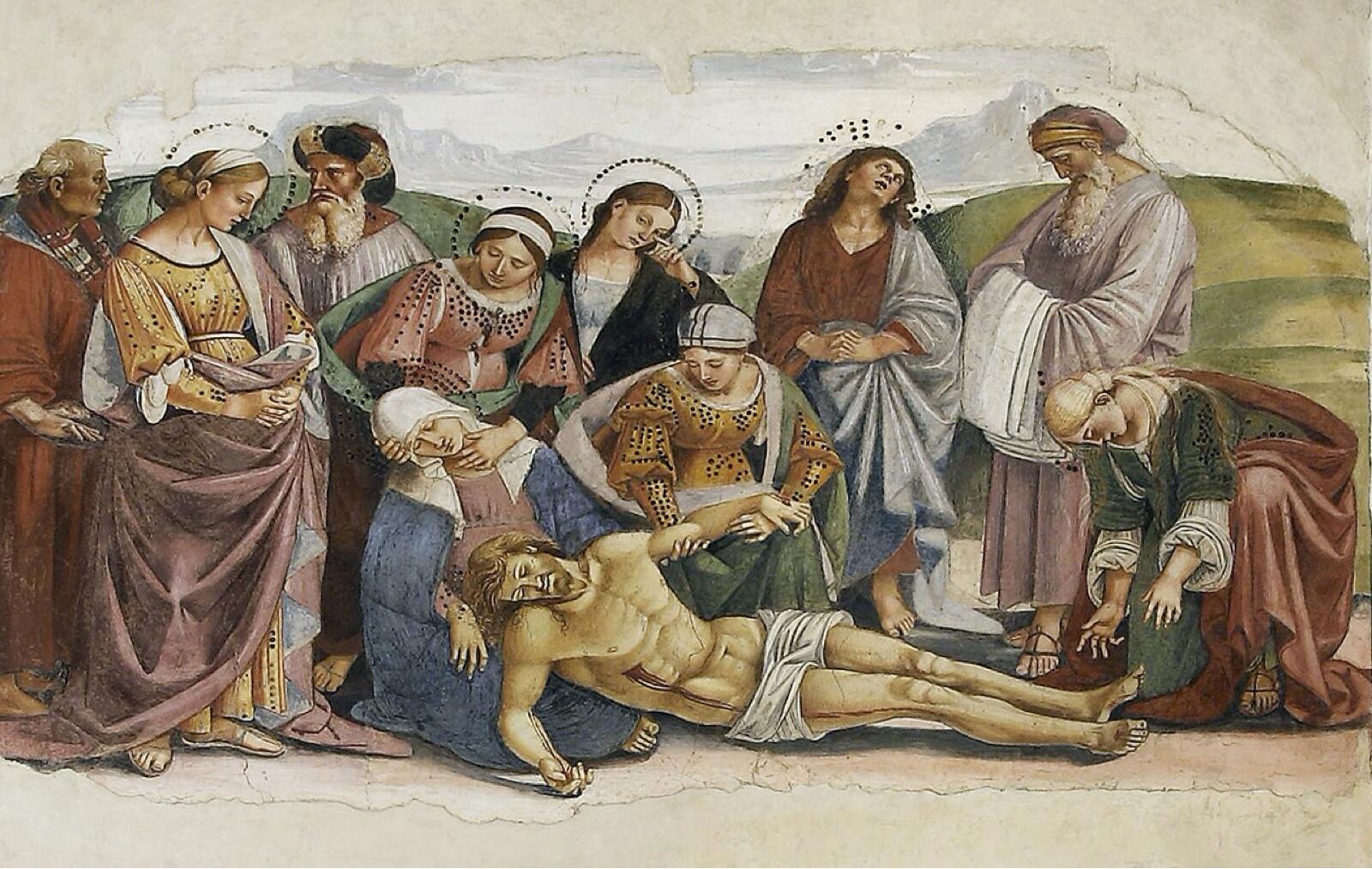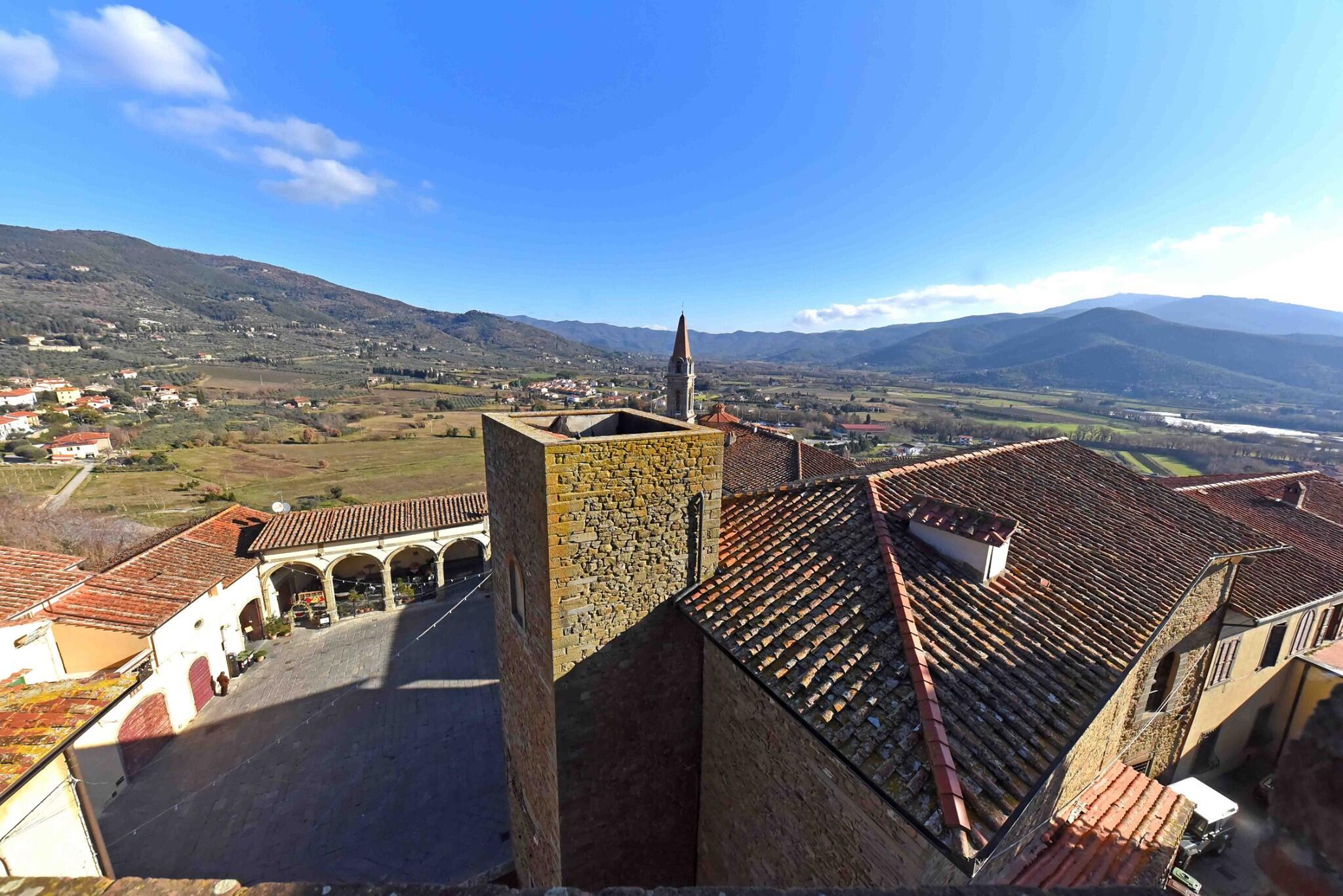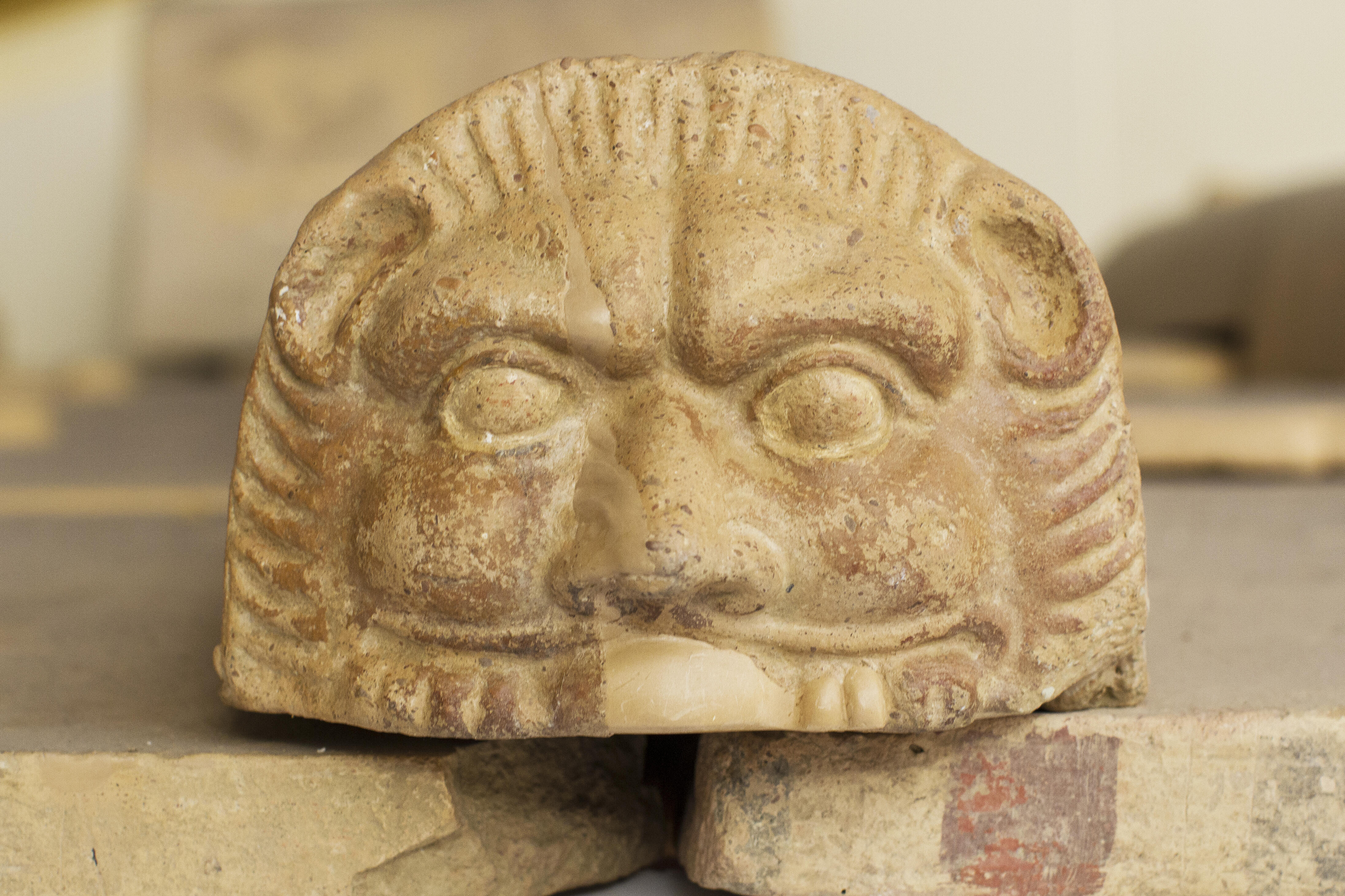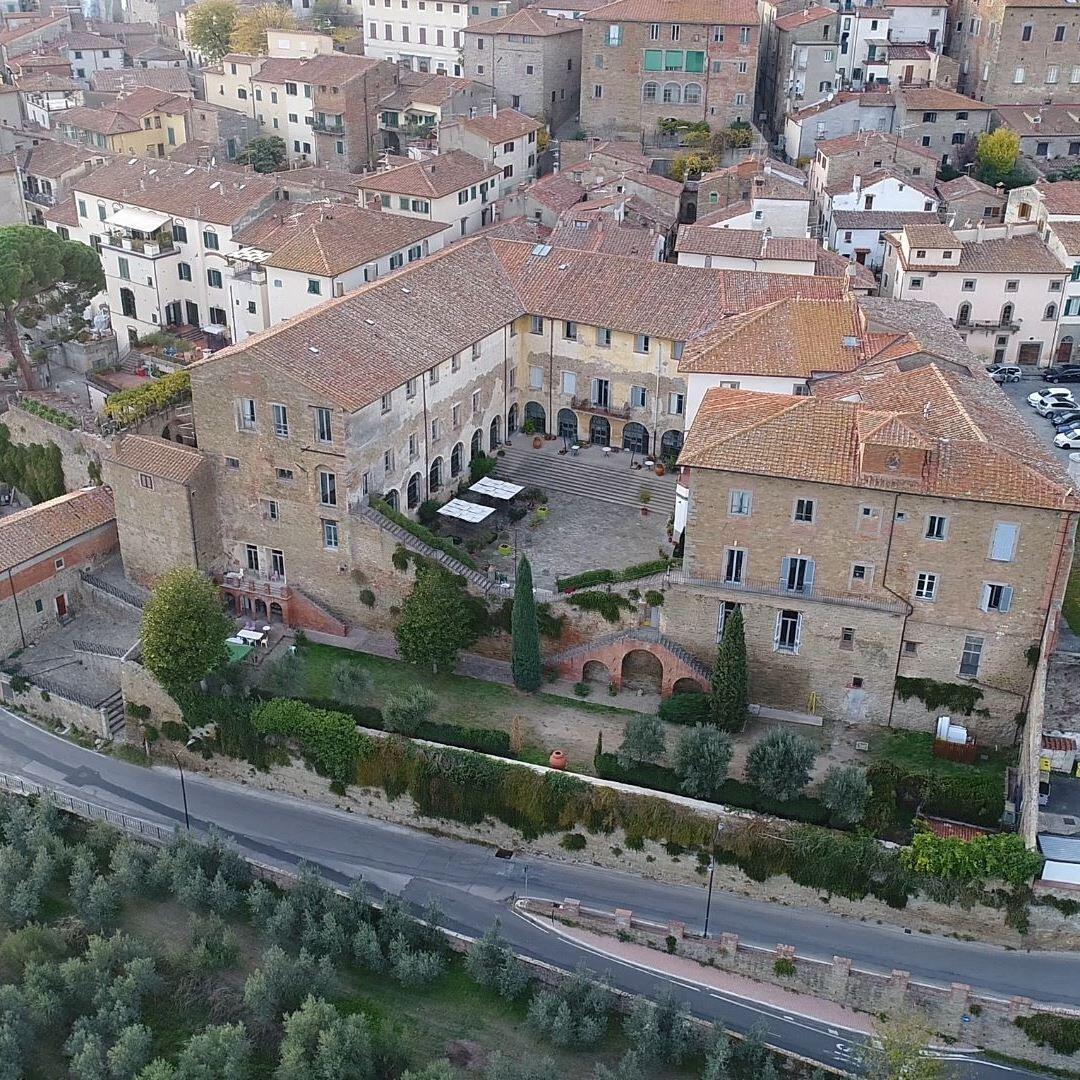POINT OF INTEREST
MONUMENTS
Loggiato Vasariano
In front of the Town Hall we find the so-called Vasari loggia: in reality the nine-arched construction, built on the occasion of the reconstruction of the current Town Hall square, dates back to 1513.
In front of the Town Hall we find the so-called Vasari loggia: in reality the nine-arched construction, built on the occasion of the renovation of the current Town Hall square, dates back to 1513. The architects of the construction were Bernardo di Ghieba and Filippo da Bellinzona, while the traditional attribution to Vasari is justified by the restoration work carried out between 1560 and 1570, the period in which the Medici coat of arms was placed.
In 1773, for static reasons, the three arches on the Val di Chio were walled up, then reopened, at the request of the population, in 1922. On the closed sides of the loggia you can see the coats of arms of the Commissioners and the Podestà, some of which are polychrome, in Robbiana terracotta or sandstone.
The three stone arches represent a true window on the Val di Chio, a wonderful green valley protected by terraced hills; These face south and are mainly used for olive growing, being located in an area particularly suited to this type of cultivation.
Images that tell a story
Welcome to our gallery: a collection of images that tell moments, emotions, and details that often escape words. Each shot is a fragment of history, a memory to share, a perspective to explore. Browse and let yourself be inspired.


 ITA
ITA
